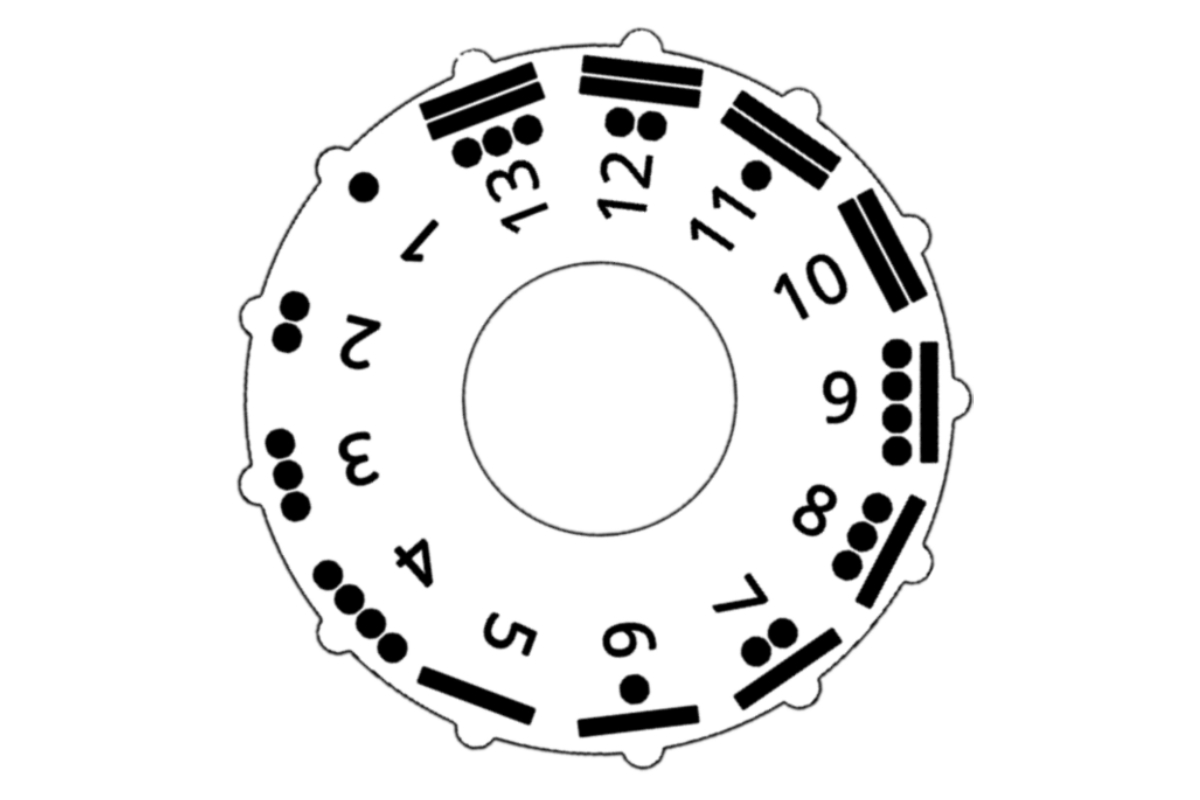The Mayan Number System is one of the most advanced and elegant numerical systems of the ancient world, reflecting a profound understanding of mathematics, astronomy, and cosmology.
Developed by the ancient Maya civilization, this vigesimal (base-20) system was integral to daily life, ceremonial rites, and timekeeping through their sophisticated calendrical systems such as the Tzolk’in, Haab’, and Long Count.
The Mayan numerals use a combination of dots, bars, and a special shell glyph to represent zero, making the Maya among the earliest cultures in human history to conceptualize and use zero as a numeral—a mathematical breakthrough with far-reaching implications.
This page offers a detailed presentation of each Mayan number from 0 to 19, including its symbol, pronunciation (in Yucatec Maya), meaning, and uses in traditional Mayan society.
Mayan Numbers: Symbols, Names, and Descriptions
| Number | Symbol | Name (Yucatec Maya) | Description |
|---|---|---|---|
| 0 | 🐚 (Shell glyph) | Mi | Represents completion, potential, the void; foundational for the concept of time cycles and mathematics. |
| 1 | • | Hun | The first principle, unity, beginnings; symbolized by a single dot. |
| 2 | •• | Ka’a | Duality, balance, represented by two dots; commonly appears in divination and symmetry in Maya art. |
| 3 | ••• | Oox | Symbol of harmony among the three worlds (underworld, earth, heavens); sacred number in ritual cycles. |
| 4 | •••• | Kan | Represents the four cardinal directions, four corners of the universe; foundational in Mayan cosmology. |
| 5 | — | Ho’ | Depicted by a horizontal bar; first step in grouping and multiplication. Associated with fingers of a hand. |
| 6 | — • | Wak | One bar plus a dot; signifies flow and movement, often used in lunar calculations. |
| 7 | — •• | Wuk | One bar and two dots; related to the seven layers of heaven in certain interpretations. |
| 8 | — ••• | Waxak | One bar and three dots; sacred in many traditions due to its association with the eight-part day cycle. |
| 9 | — •••• | Bolon | One bar and four dots; important in pregnancy cycles (nine moons), and often seen in human gestation symbolism. |
| 10 | —— | Lajun | Two horizontal bars; represents completion of a first cycle, transition into larger units. |
| 11 | —— • | Buluk | Two bars plus one dot; starts the journey beyond the base decimal, connected to complex calendrical cycles. |
| 12 | —— •• | Lajka’a | Two bars and two dots; known in day counting and ceremonial intervals. |
| 13 | —— ••• | Oxlajun | A particularly sacred number in the Tzolk’in calendar (13-day week), representing cosmic cycles. |
| 14 | —— •••• | Kanlajun | Two bars and four dots; transitional number, rarely stands alone but seen in codices. |
| 15 | ——— | Ho’lajun | Three bars; important for ritual groupings, especially in agricultural calendars. |
| 16 | ——— • | Waklajun | Three bars plus one dot; used in lunar and Venusian cycles. |
| 17 | ——— •• | Wuklajun | Three bars and two dots; featured in Long Count calendrical calculations. |
| 18 | ——— ••• | Waxaklajun | Three bars and three dots; critical in the calculation of the Haab’ calendar (18 months of 20 days). |
| 19 | ——— •••• | Bolonlajun | Three bars and four dots; final number before returning to zero or advancing positional value. |
| 20 | • (in next positional level) | Jun Kal | Marks the completion of a full vigesimal cycle; at this point, a higher order begins (similar to 10 in base-10). |
